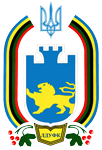Please use this identifier to cite or link to this item:
https://repository.ldufk.edu.ua/handle/34606048/32317| Title: | Другий етап розвитку сучасного олімпійського руху відповідно до авторської комплексно-фактологічної періодизації |
| Other Titles: | The Second Stage of Development of the Modern Olympic Movement According to the Author’s Complex-Factological Periodization |
| Authors: | Нерода, Неоніла Бріскін, Юрій Neroda, Neonila Briskin, Yu. |
| Keywords: | олімпійський рух періодизація Ігри Олімпіад зимові олімпійські ігри Olympic movement periodization the Games of the Olympiads Winter Olympic Games |
| Issue Date: | 16-May-2022 |
| Publisher: | Український журнал медицини, біології та спорту |
| Citation: | Нерода Н. В. Другий етап розвитку сучасного олімпійського руху відповідно до авторської комплексно-фактологічної періодизації / Нерода Н. В., Бріскін Ю. А. // Український журнал медицини, біології та спорту. – 2022. – № 7(2). – С. 296–302. https://doi.org/10.26693/jmbs07.02.296 |
| Series/Report no.: | наукові праці професорсько-викладацького складу ЛДУФК імені Івана Боберського; |
| Abstract: | Межами другого етапу розвитку олімпійського руху вважаємо 1919 та 1939 рр. – роки проведення першої повоєнної сесії МОК (Лозанна) та початку Другої світової війни, яка унеможливила подальший розвиток і функціонування олімпійського руху. Головними характеристиками другого етапу розвитку олімпійського руху є зміцнення його позицій у світовій спільноті, формування церемоніального протоколу Олімпійських ігор, початок проведення Зимових олімпійських ігор, подальше удосконалення організаційної структури МОК та олімпійського руху, зростаючий вплив міжнародних федерацій в олімпійському русі, зокрема у вирішенні питань допуску та контролю за дотриманням правил змагань, подальше вдосконалення та стабілізація програми Олімпійських ігор, співпраця та розмежування повноважень органів олімпійського руху: МОК, НОК та Ради делегатів олімпійських міжнародних федерацій.We consider 1919 and 1939 to be the boundaries of the second stage of the development of the Olympic movement. They were the years of the first post-war session of the International Olympic Committee (Lausanne) and the beginning of the Second World War, which made it impossible for the further development and functioning of the Olympic movement. The main characteristics of the second stage of the development of the Olympic movement are the strengthening of its position in the world community, the formation of the ceremonial protocol of the Olympic Games, the beginning of the Winter Olympic Games, further improvement of the organizational structure of the International Olympic Committee and the Olympic movement, the growing influence of international federations in the Olympic movement, in particular in solving issues of admission and control over compliance with competition rules, further improvement and stabilization of the Olympic Games program, cooperation and delimitation of powers of the Olympic movement bodies: the International Olympic Committee, the National Olympic Committees and the Council of Delegates of Olympic International Federations. |
| URI: | http://repository.ldufk.edu.ua/handle/34606048/32317 |
| Appears in Collections: | Наукові праці професорсько-викладацького складу ЛДУФК |
Files in This Item:
| File | Description | Size | Format | |
|---|---|---|---|---|
| Нерода_jmbs0-2022-7-2-296.pdf | 298 kB | Adobe PDF | View/Open |
Items in DSpace are protected by copyright, with all rights reserved, unless otherwise indicated.
